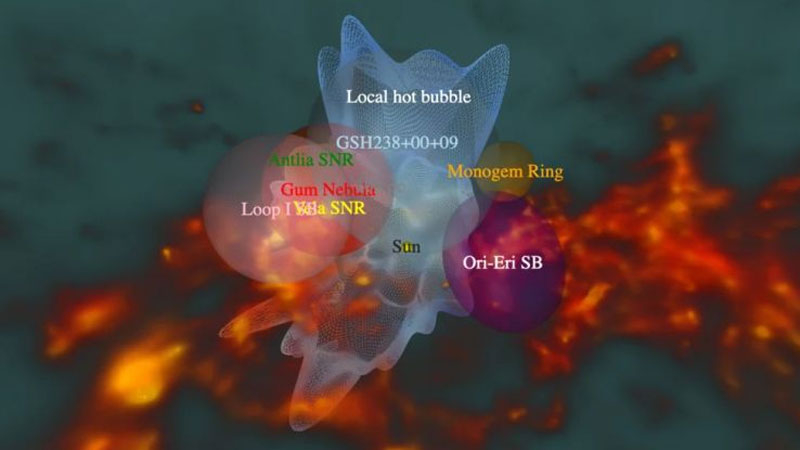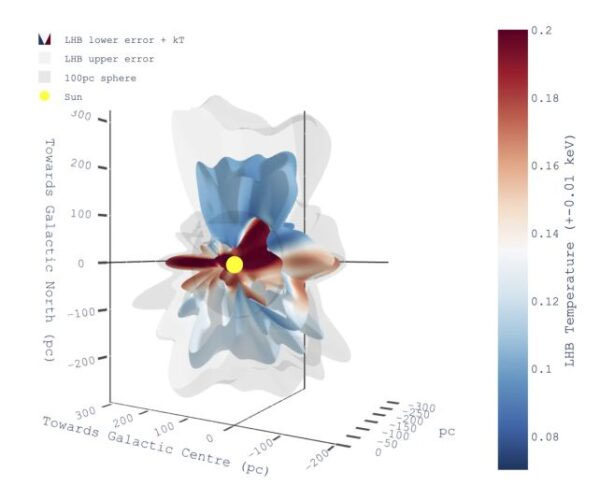A team of astronomers has created the most complete 3D map of the so-called Local Bubble, a region of space along with the Solar System that was formed after a supernova explosion 14 million years ago. In general terms, the boundaries of the Local Bubble were known to scientists. A new study using the eROSITA X-ray telescope has discovered a previously unknown element of the bubble – something like an interstellar tunnel or an extension towards the constellation Centaurus.

Image source: Michael Yeung/MPE
Interestingly, the idea of connecting all such bubbles remaining after supernova explosions with unique interstellar tunnels was put forward by NASA scientists exactly 50 years ago. The discovery made with the new tool could be the first step in gathering evidence in favor of this hypothesis.
The eROSITA telescope became the first X-ray instrument to observe the Universe from far beyond the Earth. There is a large halo of hydrogen around our planet known as the geocorona. The geocorona extends more than 600 thousand km from the Earth’s surface. The solar wind interacts with hydrogen atoms in the geocorona, exciting scattered X-ray radiation in it, similar to that emitted by gas atoms in the Local Bubble. The eROSITA telescope is located at the L2 Lagrange point at a distance of 1.5 million km from Earth and does not suffer from interference in the geocorona.
To compile a spatial map of the Local Bubble, the sky was divided into 2000 sections, each of which was examined separately by an X-ray telescope. A local bubble, left over from a supernova explosion relatively close to the Sun (this happened by chance), scattered the matter in the form of a classical bipolar nebula. There are significantly fewer atoms inside the bubble than in the rest of interstellar space, and all of them are heated to millions of kelvins. Fortunately for us, atoms are so rarefied in space that they do not heat the surrounding matter, but are easily detected by appropriate instruments.

Temperature gradient in the Local Bubble measured by eROSITA
Thanks to the eROSITA review, the Local Bubble has the most accurate description, including the definition of the temperature gradient. An impressive discovery was the discovery of a “distinct relief” – a previously unknown tunnel of rarefied gas towards the constellation Centaurus. There are several objects in that direction – two molecular clouds, the Gum Nebula, another neighboring bubble, something else, but to which specific object the tunnel goes remains unclear. One way or another, researchers have obtained valuable data that makes it possible to reconstruct the history of our galaxy. And whoever knows history will not be lost in the future.
An interactive map of the Local Bubble and its immediate surroundings can be found here. It is a pity that the eROSITA telescope was put into sleep mode on February 26, 2022 at the request of the German side. He was supposed to work for 7 years, but spent less than 2 years observing.